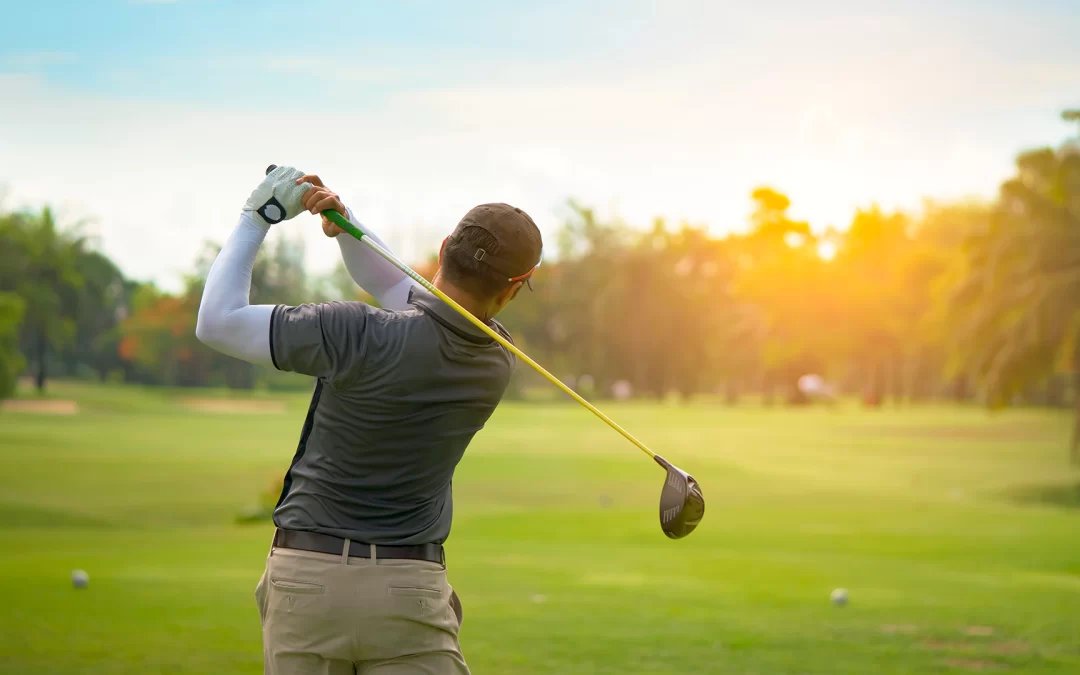As July marks National Golfer’s Month, it’s the perfect time to dive into a common golf-related injury: golfer’s elbow. Also known as medial epicondylitis, this condition affects not only avid golfers but also individuals engaged in other activities that involve repetitive wrist and forearm movements. Luckily, physical therapists are well-equipped to assist in the diagnosis, treatment, and prevention of golfer’s elbow, allowing golf enthusiasts to get back on the course with confidence. In this article, we will explore what golfer’s elbow is, its causes, symptoms, and how physical therapy can play a crucial role in your recovery.
Golfer’s elbow is a condition that causes pain and inflammation in the tendons that connect the forearm muscles to the bony prominence on the inside of the elbow. While it’s commonly associated with golf, it can also result from other activities such as tennis, gardening, or repetitive hand movements. The condition is caused by repeated stress or overuse of the forearm muscles, leading to micro-tears and subsequent pain.
The most common symptom of golfer’s elbow is pain and tenderness on the inner side of the elbow, which can radiate down to the forearm and wrist. Activities like gripping, lifting, or flexing the wrist may worsen the pain. In some cases, individuals may experience weakness in the affected arm and difficulty with gripping objects.
Physical therapy plays a vital role in the management and rehabilitation of golfer’s elbow. When you seek assistance from a skilled physical therapist, you can expect a comprehensive approach tailored to your specific needs. Here’s how they can help:
- Accurate Diagnosis: A physical therapist will conduct a thorough evaluation to accurately diagnose golfer’s elbow and rule out other potential causes of pain. This assessment may include examining your medical history, assessing your range of motion, strength, and identifying any biomechanical issues in your swing.
- Pain Management: Physical therapists utilize various techniques to manage pain associated with golfer’s elbow. These may include manual therapy, such as soft tissue mobilization, joint mobilization, and modalities like ultrasound or electrical stimulation. They can also provide guidance on the use of ice or heat therapy to alleviate pain and reduce inflammation.
- Rehabilitation Exercises: A personalized exercise program will be designed to address the specific needs of your elbow. Strengthening exercises will target the forearm muscles and improve their endurance, while flexibility exercises will restore the range of motion. Your physical therapist will guide you through proper technique and progress the exercises as you recover.
- Technique Analysis and Modification: If your golfer’s elbow is related to your golf swing or any other repetitive activity, your physical therapist can analyze your technique and identify any flaws that may contribute to the condition. They can provide guidance on modifying your movement patterns to reduce stress on the affected tendons, preventing future injuries.
- Education and Injury Prevention: Physical therapists are passionate about empowering individuals with knowledge. They will educate you on ergonomics, proper body mechanics, and preventative measures to minimize the risk of re-injury. They can also recommend appropriate warm-up and stretching routines to prepare your muscles for activity.
Golfer’s elbow can be a frustrating setback for golf enthusiasts and those engaged in repetitive forearm movements. However, with the help of a skilled physical therapist, you can overcome this condition and get back to swinging with confidence. Through a combination of pain management techniques, tailored exercise programs, technique analysis, and injury prevention strategies, physical therapists can guide you towards a full recovery.

